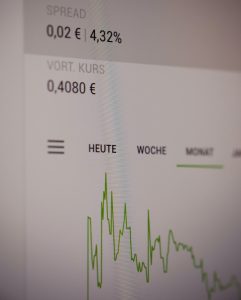Forex trading is a risky business, and the only way to minimize losses is by setting a stop loss. In simple terms, a stop loss is an order that traders place to sell or buy a currency pair when it reaches a predetermined price level. This order is aimed at preventing excessive losses if the trade goes against the trader’s expectations. To calculate stop loss, traders need to consider several factors such as the currency pair’s volatility, market conditions, and trading strategy. In this article, we will explore the steps involved in calculating stop loss in forex trading.
Step 1: Determine your risk tolerance
The first step in calculating stop loss is to determine your risk tolerance. Traders should only risk the amount they can afford to lose. Ideally, traders should risk no more than 1-2% of their trading account balance per trade. For instance, if a trader has an account balance of $10,000, they should only risk $100-200 per trade.
Step 2: Analyze market conditions
The second step is to analyze market conditions. Traders need to consider the current price action, market volatility, and economic news releases that may impact the currency pair’s movement. For example, if the market is highly volatile, traders may need to set a wider stop loss to avoid getting stopped out prematurely.
Step 3: Determine your entry and exit points
The third step is to determine your entry and exit points. Traders need to have a clear strategy that outlines the conditions under which they will enter and exit a trade. For instance, a trader may decide to enter a long position on the EUR/USD currency pair at 1.1750 and exit at 1.1850. In this case, the trader’s profit target is 100 pips.
Step 4: Calculate the distance between your entry and exit points
The fourth step is to calculate the distance between your entry and exit points. This distance is also known as the “risk distance.” Traders can calculate the risk distance by subtracting the entry price from the exit price. In the example above, the risk distance is 100 pips.
Step 5: Determine the dollar value of the risk distance
The fifth step is to determine the dollar value of the risk distance. To do this, traders need to multiply the risk distance by the pip value of the currency pair. The pip value is the smallest price increment that a currency pair can move. It varies depending on the currency pair and the trading platform used. For instance, if the pip value of the EUR/USD currency pair is $10, then the dollar value of the risk distance is $1,000 (100 pips x $10).
Step 6: Determine the stop loss level
The sixth step is to determine the stop loss level. To do this, traders need to decide how much they are willing to lose if the trade goes against them. As mentioned earlier, traders should only risk 1-2% of their account balance per trade. In the example above, if the trader’s account balance is $10,000 and they decide to risk 1% of their account per trade ($100), then the stop loss level should be set at $900 ($1,000 – $100).
Step 7: Place the stop loss order
The final step is to place the stop loss order. Traders can do this by setting a stop loss order with their broker. The stop loss order will automatically close the trade if the currency pair reaches the predetermined stop loss level. This ensures that traders do not lose more than they can afford to lose.
In conclusion, calculating stop loss in forex trading is a crucial aspect of risk management. Traders need to determine their risk tolerance, analyze market conditions, and have a clear trading strategy that outlines their entry and exit points. By following the steps outlined in this article, traders can calculate their stop loss level and minimize potential losses. Remember, the key to successful forex trading is to manage risk effectively.






